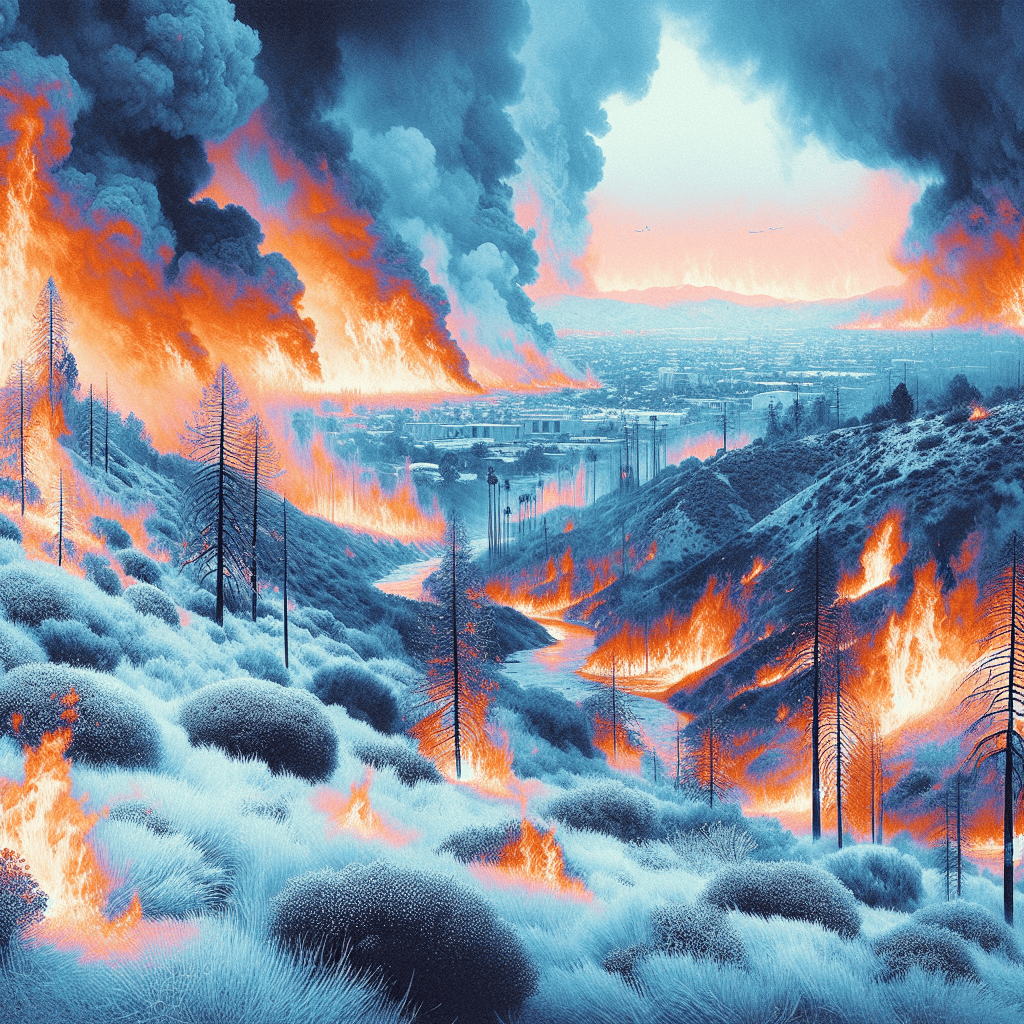Understanding the Unusual: Why Are There Winter Wildfires?
1. Prolonged Drought Conditions
California, especially Southern California, has been experiencing extended and severe droughts. Drought-stricken vegetation, which acts as fuel for wildfires, is now a year-round challenge, not just a seasonal issue. Even during winter months, insufficient rain increases the risk of fires.
2. Warming Temperatures
Global temperatures have been consistently rising due to climate change. California’s winters are becoming warmer, with reduced snowfall and higher evaporation rates. This warming contributes to drier landscapes, which are more susceptible to ignition.
3. Santa Ana Winds
An essential factor contributing to the spread of wildfires in Los Angeles, even in winter, is the presence of the Santa Ana winds. These strong, dry winds can rapidly spread flames, turning small ignition events into catastrophic blazes.
- Strength: Santa Ana winds often reach speeds of 40 to 60 mph, making firefighting efforts difficult.
- Dryness: The winds carry dry air, further dehydrating grass and brush.
The Impacts of Winter Wildfires
Environmental Consequences
Wildfires of any season have a profound impact on the environment. However, the year-round frequency of these fires accelerates many challenges:
- Loss of Biodiversity: Critical habitats are destroyed, threatening endangered species.
- Increased Carbon Emissions: Wildfires release massive amounts of carbon dioxide into the atmosphere, further contributing to global warming.
- Soil Erosion: The absence of vegetation leaves the soil exposed, leading to further erosion and degradation of the land’s quality.
Public Health Risks
Smoke from wildfires poses serious health risks, particularly for vulnerable populations. In cases of large-scale winter wildfires, smoke particles can linger in the air for days, exacerbating respiratory illnesses like asthma and chronic obstructive pulmonary disease (COPD).
Economic Impact
The costs of combating these wildfires are immense. Additionally, the destruction of homes, infrastructure, and businesses puts financial pressure on both individuals and government agencies. Insurance rates also soar in wildfire-prone areas, further adding to the burden on residents.
What These Fires Tell Us About Climate Change
The occurrence of winter wildfires underscores the immediate need to address climate change. With the rising frequency of extreme weather events, these fires are a direct result of an increasingly stressed planet. The lines between seasons are blurring, as weather patterns remain disrupted year-round.
If no significant actions are taken soon, predictions warn of more intense and frequent wildfires globally, creating a cascade of negative effects on the environment and communities.
What Can Be Done
Preventing the rise of winter wildfires in Los Angeles and across the globe necessitates a multi-pronged approach:
1. Addressing Climate Change
Global initiatives aimed at reducing greenhouse gas emissions are critical. Governments, businesses, and citizens need to come together to implement sustainable practices, such as:
- Reducing dependency on fossil fuels and transitioning to renewable energy.
- Implementing carbon capture technologies.
- Advocating for stricter environmental regulations.
2. Fire Prevention Measures
- Creating firebreaks—cleared areas to prevent the spread of fire.
- Clearing dry brush and overgrown vegetation in wildfire-prone areas.
- Enacting controlled burns to reduce fuel buildup.
3. Emergency Preparedness
Communities need to be better prepared to respond to wildfires. This includes improved evacuation protocols, increased funding for firefighting resources, and public awareness campaigns about fire safety.
Conclusion
The startling emergence of winter wildfires in Los Angeles is a visible and terrifying reminder of climate change’s impacts. These fires not only devastate communities and ecosystems but highlight the urgency of taking action against a warming world. By recognizing these patterns and implementing sustainable solutions, we can hope to mitigate their frequency and severity in the years to come.
Ultimately, combating the root causes of climate change, coupled with robust fire prevention strategies, is the only path forward to safeguarding our environment, health, and economies from these increasingly unpredictable disasters.
“`

